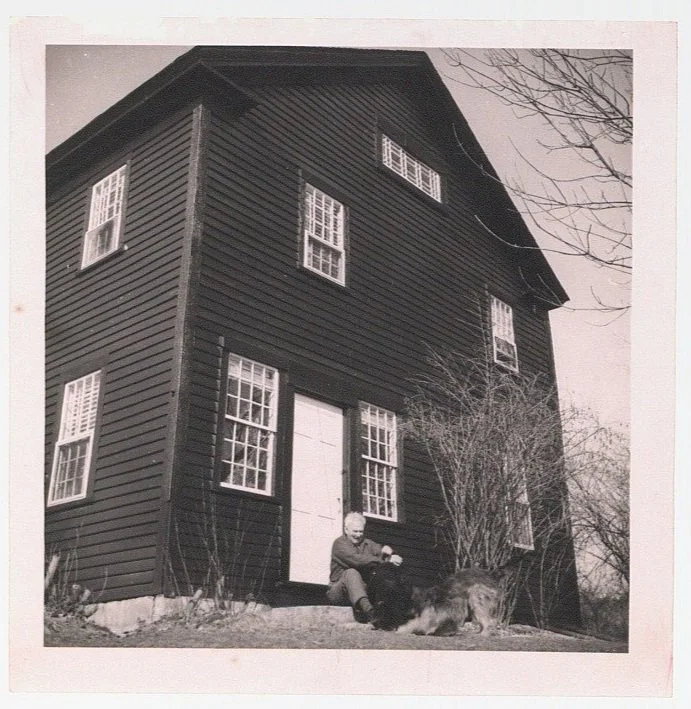Artists & Their Dogs: Alexander Calder
Sculptor Alexander Calder (1898–1976) had, loved and created many dogs throughout his life.
Here’s Calder with his dogs near his home and studio in Roxbury, Connecticut, around 1960.
Calder's first creations, made when he was 11-year-old, were a tiny dog and a duck that he gave to his parents as Christmas presents. The duck rocked back and forth when tapped: Calder would explore this kinetic element in his creations for the rest of his career.
In 1931, Calder’s wife Louisa brought home a Briard mix they named Feathers. Here’s an adorable picture of them all together a year later in Paris.
Here’s a postcard sent from Paris to New York, addressed to New York-based James Johnson Sweeney, art critic and collector and his wife, telling them to come to Paris and join the fun. Look closely at the signatures, and you’ll see the Calder’s dog Feathers (as well as Picasso’s dog Elfe). Adorable.
Calder and his daughter Sandy hanging out with Feathers.
Family portrait: Alexander, Louisa, Mary, Sandra and Feathers!
An undated Calder sculpture (which Calder referred to as an “Animobile” !!!) from the Grand Rapids Art Museum, titled “Blunt-Tail Dog.”
Here’s a “Stabile” - Calder’s name for his sculptures without moving pieces - from the Museum Middleheim in Antwerp titled “The Dog.”
Here’s Calder playing with a toy dog that he made: you can get a sense of how much movement there would have been, as the dog’s legs and tail both appear to be made of springy wire. Fun.
Here’s an wonderfully whimsical print of an etching Calder did of a man and woman walking a dog. (They may also be walking a snake and a mouse?) The building on the right looks very much like his Roxbury Studio; perhaps this is a family portrait :)
Snapshots from a beach trip with Feathers! Overexposed, but still EXTREMELY cute.
And here’s one more picture of Calder outside his studio in Roxbury, Connecticut with his dogs: he looks pretty darn gleeful, which is a pretty common way to be when you’re around dogs.
If you’re unfamiliar with Alexander Calder’s work, you are in for an absolute treat. Head over to the Calder Foundation to see and learn so much more!













